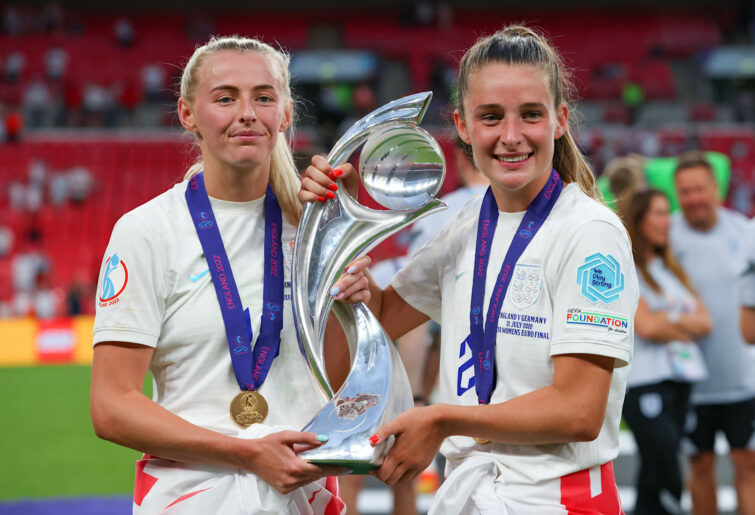
Those are just some ways to describe last month’s Women’s Euros. Yep, that’s right, the Women’s Euros were the best sporting event of 2022.
You may not have seen much of it, but the tournament will have a legacy that will change women’s football forever, at least in Europe.
Here’s why.
It was probably one of the most talked about Women’s Euros before a ball had even been kicked. There was expectation in two areas before the tournament started: on the host side to do well and even bring home England’s first-ever women’s trophy, and on the Football Association’s shoulders to deliver the biggest and the best Women’s Euros to date.
It certainly looked like it could be, when Manchester United’s Old Trafford, which can seat 74,310 spectators, was announced to host the opening fixture, England versus Austria. However, the most excitement was for the final, which was to be held at the 90,000-seat Wembley.
Context is needed for everything, and context shows how big the tournament really was. At the last Women’s Euros in 2017, the average attendance was 7743. In 2013, it was actually higher, with 8675. At the first Women’s Euros it was 3472, and finally, at the latest, it was 18,544.
That jump in attendances must have some reason behind it. The BBC threw their entire weight behind the tournament, featuring big-name pundits such as Alex Scott and Ian Wright. As mentioned before, the size of the stadiums that the games were played in were unprecedented, and the whole of Europe had their eyes on England, setting the stage of the entire tournament.
The first game broke the attendance record for a Women’s Euros match, with 68,871 fans. Beth Mead’s chip, winning the game 1-0 for England, sent the country rocking, and meant the whole of England was right behind the Lionesses from the start.
Excitement grew as the host nation scored 13 goals in their last two group games to qualify easily, and they were joined in the quarter-finals by England, Spain, Sweden, Belgium, Germany, Austria, France and the Netherlands.
There were no major shocks in the quarter-finals but some big statements were made. England came back from behind to beat favourites Spain whilst reigning champions the Netherlands were knocked out by France. The England-Spain match produced a peak TV audience of 7.6 million in England alone, and the quality in not just that game, but the whole tournament, was superb.
The semi-finals continued the drama, with the Lionesses thrashing then-world No.2 Sweden 4-0 and Germany, who have totally dominated the the tournament in years gone by, beating France 2-1. The peak TV audience was bettered in the semi-finals, with 9.3 million people tuning in on BBC One.
The scene was perfectly set for a brilliant final.

(Photo by Jonathan Moscrop/Getty Images)
Interest was higher in women’s football that it had arguably ever been and it would be hosted at Wembley, the second-largest football stadium in Europe. It would be the exciting home nation, yet to win a trophy, against the grand masters of women’s European football.
87,192 spectators were there, the highest attendance for a UEFA game ever, men’s or women’s.
England opened the scoring, after a gritty first half, with another chip, this time courtesy of Ella Toone. The Germans were not down and out, equalising 17 minutes later, the second goal England would concede.
When the game went to extra-time, many English minds were surely on penalties, and the fact that they were playing Germany.
The final would not follow the traditional storyline, with Chloe Kelly scoring in a goalmouth scramble. Football had come home. England had won the euros.
I believe the impact of the Women’s Euros will be felt for years to come. Girls across the continent wanting to get into the sport have role models to follow and women’s football coverage continues to grow.
Women’s Super League clubs reported a surge of ticket sales after England’s win, and hopefully, it will lead to women’s football going from strength to strength.

Leave a Reply